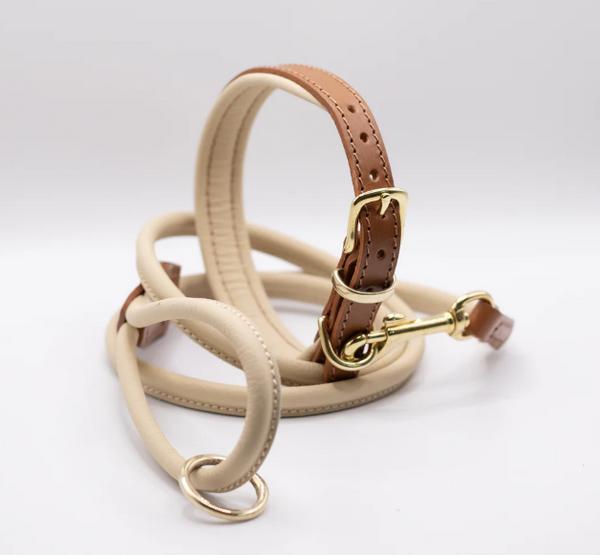As a word, 'luxury' is over-used.
And since when did the word 'luxury' apply to a leather dog collar?
Sure, works for the items we normally think about within the luxury goods category. Shoes. Handbags. Watches. Furniture. High-performance cars. Yachts.
But a dog collar? Yes. A beautifully handmade leather dog collar that possesses wow factor and is made to endure can now be considered a luxury good.
So, expect to pay more. But how can you be sure the leather dog collar you choose really has the merits - the 'qualities' - that set it apart as an authentic luxury item. If they're saying 'luxury' it isn't necessarily so.
Here are three questions to help you sort the fabulous and functional, from the frankly fraudulent.
1. Is it real leather?
A lot of leather claims to be 'genuine'. But many leather accessories are made from inferior and low-grade or reconstituted leather. Take, for example, bonded leather.
As the term imparts, these are leather bits and pieces that are bonded together by glue and re-formed into a coherent shape. This is the soft leather that makes for an inexpensive leather belt you can pick up at a street market (with the words 'Genuine Leather' stamped on the inside). Or the soft leather of a covered journal, card holder, wallet, a watch strap, an iPhone cover.
It's a bit like mdf (bonded wood particles and sawdust) pretending to be wood. However convincing the colour, pattern, texture, it's not what you'd call 'real leather'. Just like you wouldn't refer to mdf as solid oak.
If you come across a 'luxury leather dog collar' that is cheap as chips, well, that's a good clue that not only is the item mass-manufactured, but the leather used is the lowest-grade available. You definitely want to avoid bonded leather for your dog's collar.
2. Where's it made?
Like most things in our lives, a lot of stuff is made 'inexpensively' in faraway lands, in opaque working conditions. That's not a good fit within the concept of luxury which, instead, implies generations of craftsmanship and care and making of things by hand, one by one. Not a soul-destroying assembly line in an overly lit up monster size factory, where the exploited workers endure miserable conditions.
The provenance of the leather is critical. Leather is a byproduct of the food industry. In Europe there are strict animal welfare controls, as well as regulations to ensure safe disposal of chemicals and waste products from tanneries.
Of course it is therefore going to cost more to source leather from a tannery in the UK, Belgium or Italy. But with it comes a reassurance about animal welfare, environmental controls and fair and modern working conditions.
This is, in part, what is meant by the term 'reassuringly expensive'. And besides, if you're paying for a luxury good, you want to be reassured you are doing so with a clean conscience.
3. Stitched or riveted?
Rivets are metal bits that are banged into place to hold things together. Think of how the straps on a cheap sports bag are attached for example. Rivets are ubiquitous in the mass-manufacturing of synthetic dog collars and leads - and that's okay if you just need something cheap and cheerful.
But to use rivets on a luxury leather dog collar? Well, it isn't craftsmanship, and certainly the word 'luxury' should not appear anywhere nearby. It's banging things together. Rivets certainly have their place. But not in the load-bearing sections of an item that proclaims to be luxury.
Instead, look for items that have been stitched, either by machine or by hand. If stitched, what kind of guarantee does the maker provide? Sure, it's a bit mad to provide a guarantee on any product for dogs - because dogs destroy things. But for a luxury leather dog collar, I only know of one company in the world to offer a lifetime stitching guarantee.
Kristian Maris
Dogs & Horses, London




